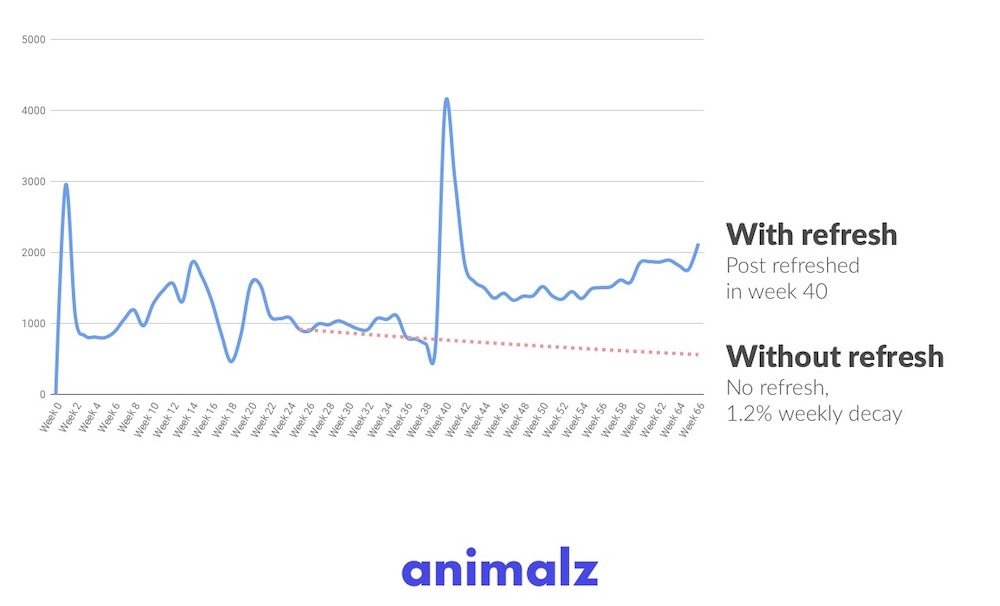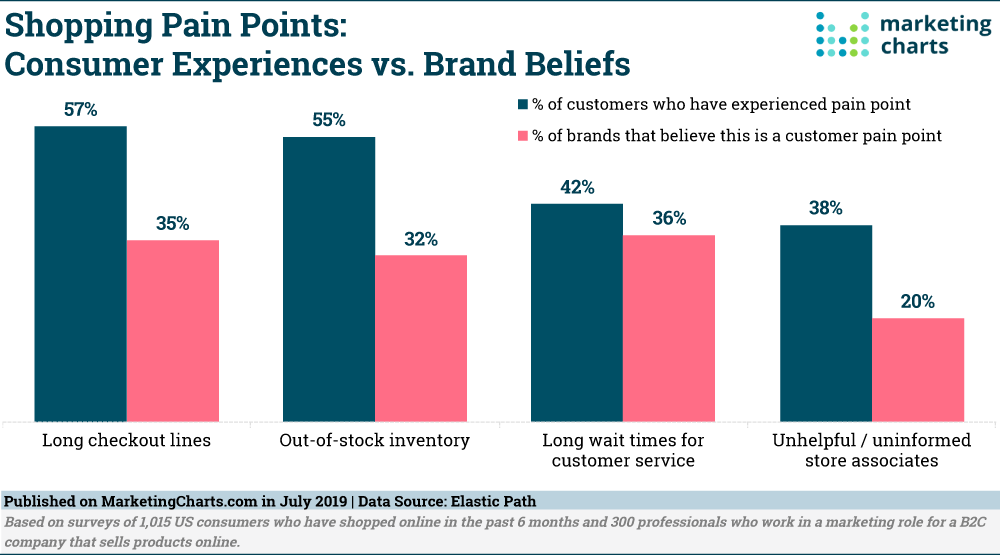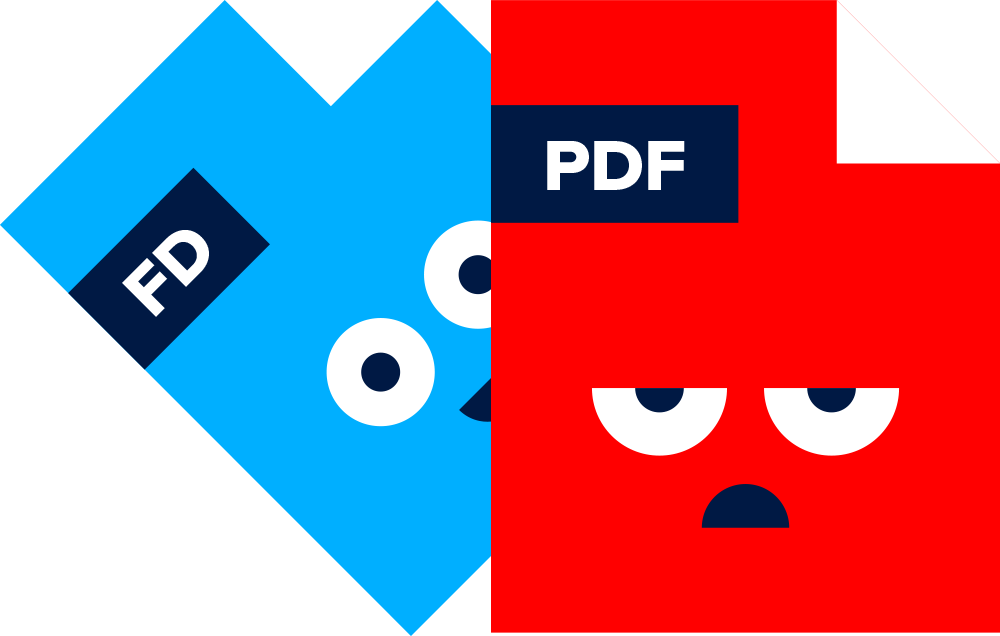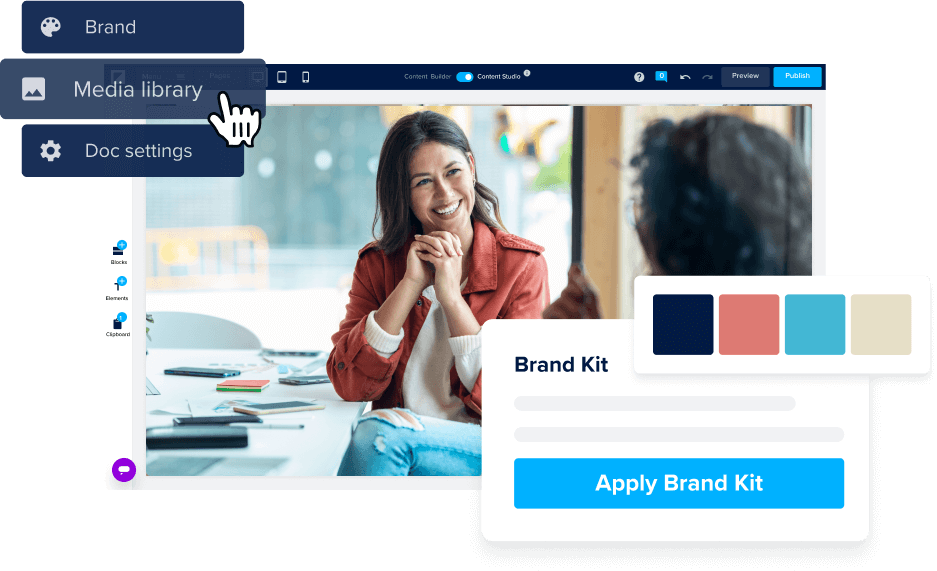When it comes to content marketing, it’s imperative that you represent your brand clearly. Your brand identity needs to shine through all your content, from offers to product descriptions, blog posts, and everything in between.
As consumers lap up new material, use your content to demonstrate your awareness of tech and industry developments. Show your users that you’re aware of their changing needs and preferences.
A content marketing refresh can be a critical business decision. The online content space is saturated and competitive. Keeping content relevant and engaging is essential if you want your business to stand out. No wonder 59% of B2C content marketers planned to expand their spending on content 2021. And B2B marketers can’t afford to fall behind, either.
It’s important to recognize when your brand is in need of a content marketing refresh. Maintaining relevant and engaging content is an essential business strategy for companies trying to head upmarket, shift into new areas, expand their offerings, grow their market share or even rebrand themselves.

Image by animalz
Possible reasons you need a content marketing refresh
- You’ve rebranded
- You’re losing customers to your competition
- You’re not experiencing your target growth
- You’re diversifying your product offerings
- You’re expanding into new markets
- You’re adjusting your brand messaging
- Your website maintenance has fallen behind
- Customers seem confused about what you actually do
The 6 things to consider before a content marketing refresh
If you think you might require a content marketing refresh, don’t panic. Updating your content need not be a complicated process. Before launching into a total overhaul, however, there are some important things to consider.
1. What are my customers’ pain points?
Ask yourself whether your content addresses customer pain points. All this means is identifying your customer’s most common problems or roadblocks. Your content should clearly address these topics and offer a solution to those problems. In turn, this establishes your brand as a trusted resource and improves the reputation of your business.
Content marketing should be customer-centric. Keep this at the forefront of your mind when starting a content refresh. If your content isn’t honing in on customer pain points already, this is the perfect time to sort it out. Start to analyze your content from your customers’ point of view.
Always ask yourself: am I offering value to my target persona(s)?
Follow these simple research steps to keep your content customer-focused:
- Interview customer service reps — Take this opportunity to identify your customers’ frequently asked questions. What are your customers confused about and what do difficult customers tend to complain about?
- Get your messaging framework down — make sure your messaging is on-brand at all times and across all channels.
- Do keyword research — what are your customers actually searching for? Hone in on their target keywords and be exactly what they’re looking for.
- Look at FAQs — search frequently asked questions online for your targeted keywords.
- Monitor key metrics — check which pieces of content and channels are driving the most traffic and conversions, and implement a distribution plan accordingly.

Image by MarketingCharts
2. What’s my unique message and tone of voice?
You’ve figured out who your customers are and identified their pain points. The next step is to work out how best to speak to them. The best way to do this is to create a cohesive brand messaging framework. This will help you establish a corporate and persona-level brand messaging style.
The most important thing for your content marketing is consistency. Make sure all your messaging is consistent. That means brand voice, tone, appearance, and visuals. Check your existing content. Are there a lot of variances in your style? If so, this could be turning customers off.
Be detail-driven. Once you’ve established a solid messaging framework, implement it across all platforms — social included. The content you deliver says a lot about your organization, so don’t overlook the details.
Use a brand book to document your new guidelines. Be specific about the colors, typefaces, and visual elements that content creators should adhere to. Finally, make sure every content creators, whether in-house or outsourced, follows the document before submitting content.
There are many tools out there that will help you maintain a consistent marketing strategy. A DAM system is an efficient way to implement a content refresh. Digital Asset Management systems allow businesses to create and manage an entire library of branded content. A great way to ensure content across all departments fits with your brand book guidelines.
3. Which types of content do my customers consume best?
Different customers want different things. Some may like interactive content while others may prefer information-rich articles.
In general, customers gravitate towards content that they can easily engage with, and information that they can easily absorb. That’s why it’s good practice to identify which content formats drive the most engagement from your target personas.
Once you’ve identified your customers’ preferences, replicate this ideal content format throughout the customer journey. Audit your content strategy accordingly, and focus on creating content directed towards your average persona’s preferences.
Make sure your marketing strategy is discussed across all departments. An effective content revamp is a team effort. Make use of video conferencing tools to keep everyone in the loop.
You’ll get your content straight to the point and dramatically improve the user experience in the process.
4. Which channels should I focus on?
Your content marketing strategy should be comprehensive. That means your brand needs to be consistent across all media channels. Unified content is just as important for your internal communications as it is for external marketing campaigns.
For external marketing, a distribution plan is key. This will help you identify where you can best reach your clientele. You can then focus your content distribution accordingly. Consider everything from where your customers like to buy, to which platforms they engage with most.
Consider investing in newsletter software. This is a great way to maintain a consistent channel of communication with users and prospective clients. A great way to drive engagement with your brand. You might even consider starting an internal newsletter for your team.
And don’t overlook personal communication. Phone calls with your customers are an amazing way to reach out directly and boost satisfaction with your brand. By combining this with call recording, you’ll stay on top of your customers’ pain points and can also monitor how your brand messaging is used in everyday conversation.
Remember that your marketing strategy should also impact your internal communications. All content should be a reflection of your brand. Maintain a solid visual identity across all platforms. That includes internal communications and training tools. This will ensure a united workforce.
5. What trends work for my brand?
Engaging with trends can be an effective way to boost your brand’s reach. However, it’s important not to get carried away. Don’t choose trends over your brand’s identity. Emulate trends that fit cohesively with your existing brand marketing strategy.
Remember that trends come and go. It’s great to add new ideas and revamp your content, but make sure your core brand message remains intact. Don’t overlook the basics. Good content is good content, but keeping up to date with technology and data management trends is essential.
6. Will your new content strategy contribute to achieving your business goals?
Finally, you need to ask yourself whether or not a new or refreshed content strategy is going to be an effective way to reach your business goals. A content marketing refresh will only be beneficial if it helps your business work towards its aspirations.
Conduct annual reports to monitor your progress. Use a content refresh to focus on maximizing reach, converting site visitors into leads, and promoting your brand identity. And remember, consistency is always key.
Conclusion
Done right, a content marketing refresh can transform your brand and bring new clients to your business. Remember to focus on customer pain points, consumption habits, and consistency. Show your customers that you’re up to date with the latest trends, but never sacrifice your core brand values in the process.
So, there we have it. Take some time out to look at your brand’s existing content. You might just find that it’s time for a much-needed refresh!





